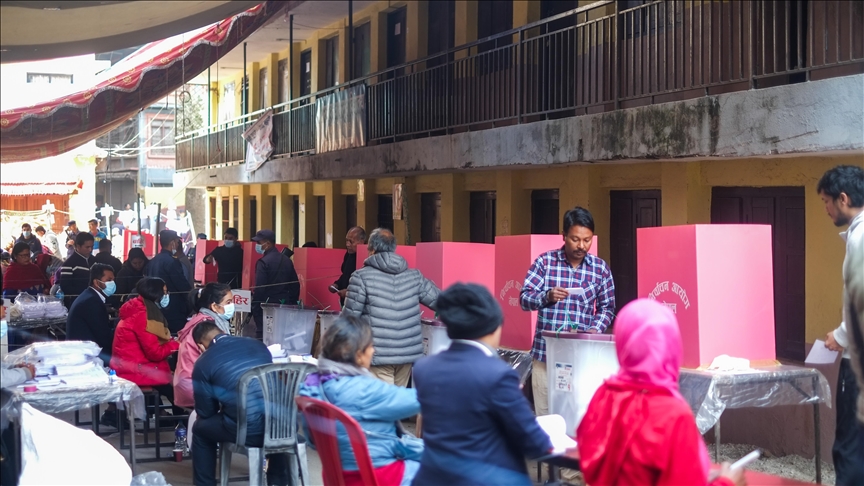ISTANBUL
Although Nepal’s ruling parties’ alliance may retain power for the next five years, political observers believe that the Nov. 20 election results demonstrated that people were looking for new faces in the 275-member parliament.
While the final seat share count has not yet been made public, the five-party ruling alliance led by the Nepali Congress won a majority in direct elections last month on 165 seats. Whereas the remaining 110 members will be elected under a proportional electoral system in which the entire country is treated as a single electoral constituency.
Under the electoral system of Nepal, a party has to pass a threshold of 3% of the accepted votes to get seats under proportional representation.
To obtain seats under Nepal’s proportional representation electoral system, a party must obtain more than 3% of the accepted votes.
Around 2,412 candidates ran for representation in the House of Representatives, with the ruling parties’ alliance of Nepali Congress, Nepal Communist Party (MC), Nepal Communist Party (CPN-US), Loktantrik Samajwadi Party, and Rastriya Janamorcha winning 57, 18, 10, 04, and 01 seats, respectively.
A party or alliance has to get a minimum of 138 seats to form the government in the landlocked Himalayan nation.
Shankar Khatiwada, a political observer and member of the CPN-US, told Anadolu Agency by phone from Kathmandu that the emergence of new parties, including his own and the National Independent Party, was a “takeaway” from the country’s latest general elections.
“Our party was formed last year and grabbed 10 seats, while the recently formed National Independent Party won seven seats, and they won from Nepal’s urban areas,” he said, adding: “it shows the electorate is completely satisfied with the performance of previous governments and are looking for alternative parties or forces, which will ensure that their needs are fulfilled.”
The National Independent Party’s seat share could rise to more than 20 after the final results, he said, referring to the party’s massive vote share, which could rise to 21 seats under the proportional representation system.
While the official results have yet to be announced, Khatiwada believes that the ruling alliance will gain around 48 more seats under the proportional representation system and will be able to form the next government.
The ruling alliance has secured 90 seats, and with the addition of 48 more seats, the Nepali Congress-led alliance will have around 138 seats, the bare minimum for forming a government.
The opposition camp, led by the Nepal Communist Party (UML), also included the Janata Samajwadi Party Nepal and the Rastriya Prajatantra Party, which won 44, 7, and 7 seats in direct elections, respectively.
According to the Election Commission, approximately 18 million people were eligible to vote in the country, which has had 10 different governments since the abolition of a 239-year-old monarchy in 2008.
A total of 10.05 million people voted, accounting for 61% of all registered voters.

